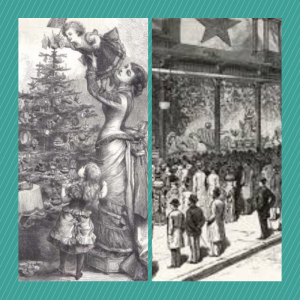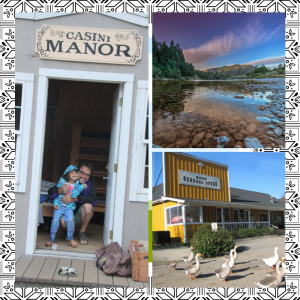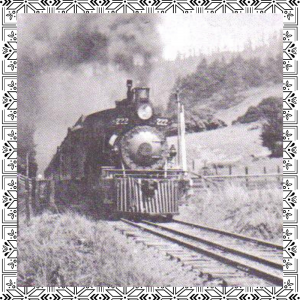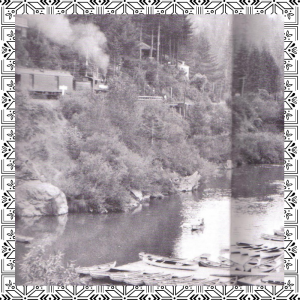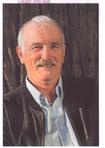John Michael McCarty's Blog, page 4
December 21, 2018
Christmas in 1880’s San Franancisco
Let’s take a trip back to Christmas in 1880’s San Francisco. It is interesting to note during this season of divisiveness that three quarters of the population of the City were first generation immigrants. They brought some wonderful traditions that are still with us today. The influx of Irish changed the major holiday of the year from the Protestant promoted Thanksgiving to Christmas. The folks from Ireland (largest group of immigrants to S.F. in 1880), many of whom settled in what is now present-day Mission District, started the custom of putting out cookies and milk (or was it Baileys Irish Cream) for Santa on Christmas Eve. This was based on the practice of leaving the front door open so that Mary and Joseph could enter and find a beverage and sweet bread on their journey to Bethlehem.
Christmas in Old San Francisco:
Germans (second largest group of immigrants to S.F. in 1880) settled in present-day Polk Gulch and are credited with the convention of decorating the Christmas tree (photo on left). Lit candles, small gifts and candied sweets adorned the fir branches. Soon thereafter, Woolworth’s sold German imported glass ornaments on the cheap. They also introduced the idea of stringing popcorn, edible nuts and gingerbread across the tree as well as adding tinsel (loaded with lead of course). The English (3rd largest immigrant group to S.F. in 1880) introduced the convention of kissing under the mistletoe. Those cheeky devils! A typical day might have included a visit to the bedecked store window at Macy’s (photo on right) before having lunch at its popular diner. Next, your coachman would deliver you to San Bruno Mountain to cut a tree before returning to your abode along Broadway. Happy Holidays. Cheers!
The post Christmas in 1880’s San Franancisco appeared first on John McCarty.
December 2, 2018
Civil War Reenactment
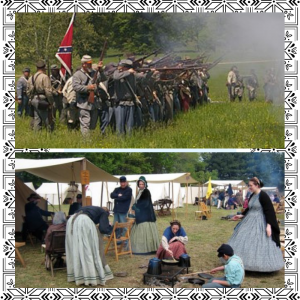 The Civil War reenactment in Duncans Mills occurs each July and is the biggest such show in the state if not the western United States, incorporating over one thousand people. It has been at the same venue since 2000, sponsored by the California Historical Society and Casini Ranch. During the weekend performance, two historic battles are recreated each day with Confederate and Union armies splitting victories.
The Civil War reenactment in Duncans Mills occurs each July and is the biggest such show in the state if not the western United States, incorporating over one thousand people. It has been at the same venue since 2000, sponsored by the California Historical Society and Casini Ranch. During the weekend performance, two historic battles are recreated each day with Confederate and Union armies splitting victories.
“There’s a lot of brush clearing to be done,” says Teri Moretti of Petaluma, “not to mention the issue of the cow patties.” These bovine pies, however, remain where they lay, making navigating the battlefield somewhat like negotiating a minefield. The surrounding hills of Freezeout Road soon become filled with the sound of fife and drum, musket and cannon as soldiers engage in a war that took more than 700,000 lives from 1861-1865.
Civil War in Duncans Mills:
Most units keep a “loaner box” of authentic uniforms for the last-minute visitor who wants to partake and feel the itch of wool under a smoke-riddled sky. Patrons can visit the makeshift camps and interact with doctors, nurses, musicians, merchants and townspeople of yesteryear. While the display of the Confederate flag around the country today often incites strong reactions, the participants of the Civil War Reenactment feel that their presentation is a reflection of history and not racial sentiments. However, it is said that on one occasion security had to escort members of the audience for publicly demonstrating such views. Don’t forget to don the period garb and attend the hoedown at Casini Ranch.
The post Civil War Reenactment appeared first on John McCarty.
November 30, 2018
Sportsmen’s Club of Duncans Mills
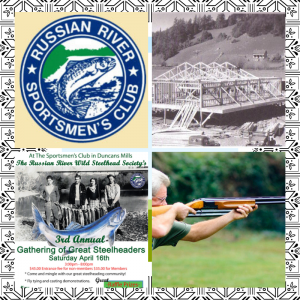 The Russian River Sportsmen’s Club of Duncans Mills was founded in 1938 to “…promote cooperation between land owners, ranchmen and sportsmen”. Another goal has continued to be the rescue of fish that become stranded in the creeks and pools adjoining the nearby Russian River. In 1948 Angelo Boles pushed the organization to purchase six acres, and a clubhouse was soon underway. George Guerne (relative of founding fathers of Guerneville) showed up with his crew to donate their talents.
The Russian River Sportsmen’s Club of Duncans Mills was founded in 1938 to “…promote cooperation between land owners, ranchmen and sportsmen”. Another goal has continued to be the rescue of fish that become stranded in the creeks and pools adjoining the nearby Russian River. In 1948 Angelo Boles pushed the organization to purchase six acres, and a clubhouse was soon underway. George Guerne (relative of founding fathers of Guerneville) showed up with his crew to donate their talents.
Membership peaked in the early fifties with some six hundred members. Today the Sportsmen’s Club is supported by eighty hardy souls. Women such as Gladys Pacheco of yesteryear (served as president from 1951-1953) and Lynn Wheeler of today have always played an important role.
Sportsmen’s Club:
The Sportsmen’s Club is a great place for banquet hall rentals, steelhead fishing tournaments, trap shooting contests, kayaking, camping and more. Brush behind the range is thick with targets for archery members, resembling an active hunt. There was a dust-up a few years ago regarding the use of lead in ammunition by gun users, fearing leakage into the nearby waterway. Fish and Game became involved and “got the lead out”.
The post Sportsmen’s Club of Duncans Mills appeared first on John McCarty.
November 28, 2018
Casini Ranch in Duncans Mills
In 1881 Bartolomeo and Anastasia Casini settled in the area around Duncans Mills, first living along what is today Freezeout Road. Not long afterwards, the bridge washed out by one of Russian River’s famous floods, forcing the Casini family to move into the European Hotel nearby. Their son, Paul Anthony Casini, worked as the dairy manager for the La Franchi family. In 1932 he bought out the La Franchi shares and became the sole owner of what is now Casini Ranch.
Casini:
Over the next 33 years, Paul Anthony Casini and his son George would grant people access in order to explore one of the more renowned fishing spots along the Russian River, Brown’s Hole. Back in the forties and early fifties, it is said that you could get knocked over by the 50,000 salmon returning each winter in search of their birthplace. When the Coyote Dam north of Ukiah was built in 1957, it wiped out miles of prime spawning waters. But the Russian River is regaining some of its respect, thanks largely to a successful hatchery program at Sonoma Reservoir on Dry Creek. Many anglers are returning to Brown’s Hole, reporting catches of steelhead in the 10-to-18 pound class (it should be noted that fishing for Chinook and coho salmon is prohibited). In 1965 George Casini began the process of turning the 110-acre parcel bounded by the Russian River and Moscow Road into what is now Casini Ranch Family Campground. Besides full RV hookups, a number of activities are offered including boating, swimming, movie nights, hayrides, bonfires and ice cream socials. Paul Casini, George’s son, has kept the park within the family business and oversees its day-to-day operations.
The post Casini Ranch in Duncans Mills appeared first on John McCarty.
November 24, 2018
Last Train Leaves the Russian River
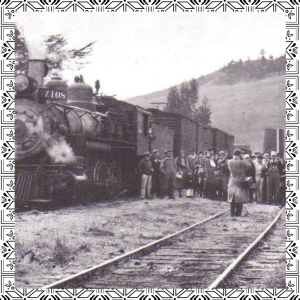 Guerneville declared a holiday on the last day of operations for the Northwestern Pacific Railroad. With three cars full to capacity, Engine No. 108 cruised down to Rio Campo (now Northwood) where it crossed the Russian River (at the 9th tee of present-day golf course) and headed into the Bohemian Grove before running down Moscow Road in Monte Rio to Duncans Mills. With the sky overcast, 250 persons gathered at the depot for the “last rites” (see photo). All came together for pictures and speeches. Lunches were eaten and beer and harder liquid flowed freely. Over in one corner of the Duncans Mills depot several of the old-timers talked and wondered what was going to happen to the area. Without a railroad how could business go on? What did the future hold? And so sixty years of railroading came to an end.
Guerneville declared a holiday on the last day of operations for the Northwestern Pacific Railroad. With three cars full to capacity, Engine No. 108 cruised down to Rio Campo (now Northwood) where it crossed the Russian River (at the 9th tee of present-day golf course) and headed into the Bohemian Grove before running down Moscow Road in Monte Rio to Duncans Mills. With the sky overcast, 250 persons gathered at the depot for the “last rites” (see photo). All came together for pictures and speeches. Lunches were eaten and beer and harder liquid flowed freely. Over in one corner of the Duncans Mills depot several of the old-timers talked and wondered what was going to happen to the area. Without a railroad how could business go on? What did the future hold? And so sixty years of railroading came to an end.
November 14, 1935.
The post Last Train Leaves the Russian River appeared first on John McCarty.
Train Crosses River at Duncans Mills
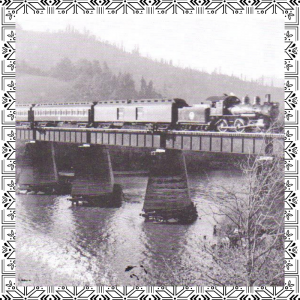 The broad gauge accommodated the passenger trains when the lumber industry along the lower reaches of the Russian River faded in the early part of the 20th century. The broad gauge crossed the river at three locations: (1) Cosmo (now Hacienda), (2) between Rio Campo (now Northwood) and Bohemian Grove; and (3) at Duncans Mills (see photo). Two trains made their way from San Francisco to the Russian River on a daily basis with weekend and holiday specials offered at $1.25 roundtrip. The larger 4-4-0 engines were capable of handling a thirteen-car train. Northwestern Pacific (NWP) once again bounced back into the black until the Depression hit in earnest, crippling the system in the early 1930’s.
The broad gauge accommodated the passenger trains when the lumber industry along the lower reaches of the Russian River faded in the early part of the 20th century. The broad gauge crossed the river at three locations: (1) Cosmo (now Hacienda), (2) between Rio Campo (now Northwood) and Bohemian Grove; and (3) at Duncans Mills (see photo). Two trains made their way from San Francisco to the Russian River on a daily basis with weekend and holiday specials offered at $1.25 roundtrip. The larger 4-4-0 engines were capable of handling a thirteen-car train. Northwestern Pacific (NWP) once again bounced back into the black until the Depression hit in earnest, crippling the system in the early 1930’s.
Circa 1930.
The post Train Crosses River at Duncans Mills appeared first on John McCarty.
Railroad along the Russian River
Old No.222 with engine No. 20 heading a five-car train on the three-rail portion west of Monte Rio approximately where Cassini Ranch is today. Next stop, across the river to Duncans Mills.
Year 1924.
The post Railroad along the Russian River appeared first on John McCarty.
Heading To Duncans Mills
This is a photo of a broad gauge passenger train leaving Monte Rio and heading down present-day Moscow Road along the Russian River to Duncans Mills, 3.3 mile distance.
Circe 1890.
The post Heading To Duncans Mills appeared first on John McCarty.
November 23, 2018
Catching the Ferry
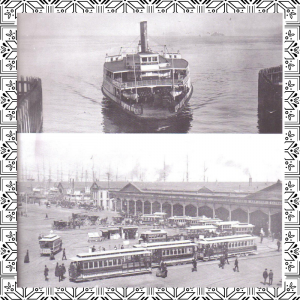 The camera-eye records the arrival of the venerable ferry Tiburon as she glides into the slip at Sausalito on a routine afternoon run connecting with train No 224 for the the Russian River in the year 1922.
The camera-eye records the arrival of the venerable ferry Tiburon as she glides into the slip at Sausalito on a routine afternoon run connecting with train No 224 for the the Russian River in the year 1922.
In the 1880’s passengers boarded the ferries through this structure at the foot of Market Street, San Francisco, for the ride to the train terminal at Sausalito.
The post Catching the Ferry appeared first on John McCarty.
November 22, 2018
Historic Buildings of Duncans Mills
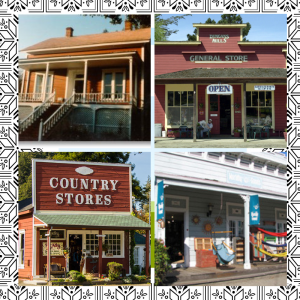 As you round the curve into Duncans Mills from the east, to your immediate right, you will see The Superintendent’s House (upper left photo) snug against the hill, one of the town’s first historic buildings. Circa 1880, it was the old company house of the Duncans Mills Corporation during the sawmill days, providing shelter for the family that founded the village that still bears its name. Recently it existed as a Bed & Breakfast and is on the market for $945k. You can Google “24951 Hwy 116” for an insider’s look into a home that has retained the Victorian charm of yesteryear.
As you round the curve into Duncans Mills from the east, to your immediate right, you will see The Superintendent’s House (upper left photo) snug against the hill, one of the town’s first historic buildings. Circa 1880, it was the old company house of the Duncans Mills Corporation during the sawmill days, providing shelter for the family that founded the village that still bears its name. Recently it existed as a Bed & Breakfast and is on the market for $945k. You can Google “24951 Hwy 116” for an insider’s look into a home that has retained the Victorian charm of yesteryear.
On the flats you can still see DeCarly’s old General Store (upper right photo), built in 1888. For over one hundred and thirty years, the store has met the varied needs of the town’s 170 residents.
Duncans Mills:
A few steps away is another historic building. Country Stores (lower left photo) features Pig Alley, Jim & Willy’s, and Quercia Gallery. The structure dates back to 1876 when it served as a hotel and livery stable, constructed by Christopher de Quien who was a former Pony Express rider in Louisiana before settling in Duncans Mills. The hotel accommodated the musicians, tourists, investors, artists and vacationers that came in daily on the rails. The livery stable rented horses as well as providing stagecoach service up the coast as far as Fort Bragg. Of French royalty, the lad had style but left town when the locals bastardized his name to “Queen”.
Worldly Goods (lower right photo) is located nearby and occupies the space of the former John Orr’s Saloon, which provided distilled spirits to the town’s first inhabitants in the late 19th century. Orr purchased a section of the Muniz Rancho land grant and soon established what was then the premier saloon north of San Francisco. HAPPY THANKSGIVING
The post Historic Buildings of Duncans Mills appeared first on John McCarty.

